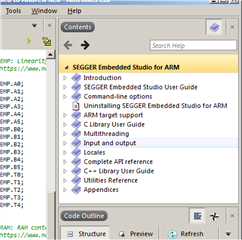I am using 'Segger Embedded Studio'. While changing the settings of a project in options, why we select Private Configurations (common)? I have seen this procedure in many tutorials. When should we use public configurations (release & debug)?
I am using 'Segger Embedded Studio'. While changing the settings of a project in options, why we select Private Configurations (common)? I have seen this procedure in many tutorials. When should we use public configurations (release & debug)?
I don't use SES, I use Eclipse. I assume that what you are talking about is build configurations? If that's the case, you can use them to compile "different versions" of the same project without making any actual changes in code.
For example, maybe you want logging enabled in the Debug config and logging disabled in the Release config. You can define some conditions for the preprocessor to compile code differently for different configurations, e.g. you can have DEBUG in your preprocessor definitions and wrap code with #ifdef DEBUG sentences.
You can also have different build steps in different configurations - for example you could have the Release config generate DFU zip files automatically when you compile and so on.
SES User Manuals:
https://download.segger.com/SES/segger_embedded_studio_manual.pdf
https://www.segger.com/downloads/embedded-studio/EmbeddedStudio_Manual
The relevant part of the SES online documentation is here:
https://studio.segger.com/ide_project_configurations.htm
Documentation is also available within the IDE itself:

SES forum: https://forum.segger.com/index.php/Board/9-SEGGER-Embedded-Studio-related/
Note that this has nothing specifically to do with Nordic; it is a standard feature of SES.
I assume that what you are talking about is build configurations?
Yes, it is.
The "public" configurations are the ones that you can actually build.
The "private" configurations can't be built - they are used to define stuff which is inherited by the "public" configurations.
When should we use public configurations
Apart from Debug & Release, another common use for 'Configurations' is to build different variants of a project; eg, one to run on a Dev Kit, and one to run on your custom hardware.
As Andy suggests, the concept of "Configurations" is pretty much universal to all IDEs - not just SES.
However, I haven't seen another one that allows this hierarchy of inheriting "common" settings. It is extremely useful!